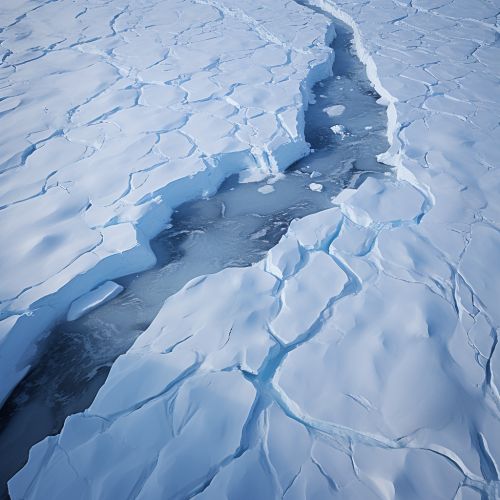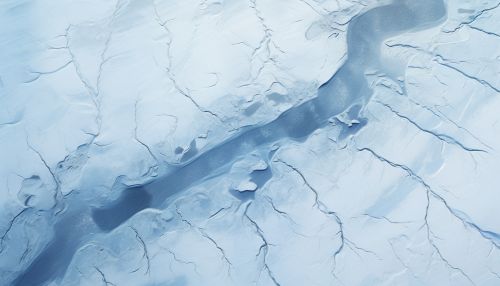Ice stream
Overview
An ice stream is a region of an ice sheet that moves significantly faster than the surrounding ice. Ice streams are a type of glacier and are significant features of the Antarctic where they account for 90% of the ice leaving the interior and feeding into the surrounding ocean. They are up to 50 km wide, 2 km thick, hundreds of kilometers in length, and can move at speeds that exceed 1 km per year in some cases.
Formation and Characteristics
Ice streams form in areas of an ice sheet where the base is well lubricated, either by water from melting at the base of the ice sheet or from warm, deformable sediment. The presence of water or deformable sediment reduces the friction between the ice and the bedrock, allowing the ice to flow more rapidly. The flow of an ice stream is also influenced by the glaciological properties of the ice itself, such as its temperature, crystal structure, and impurity content.


Ice streams are characterized by their fast flow, which distinguishes them from the slower-moving ice in the surrounding ice sheet. They have a distinct boundary with the slower ice, which can be seen in satellite images as a sharp transition in surface velocity. The flow of an ice stream is concentrated in a narrow band, which can be several kilometers to tens of kilometers wide. The ice within this band is highly fractured, with many crevasses and shear margins.
Role in Ice Sheet Dynamics
Ice streams play a crucial role in the dynamics of ice sheets. They are the primary means by which ice is transported from the interior of an ice sheet to the ocean, where it can contribute to sea level rise. The speed and direction of ice stream flow can have a significant impact on the overall behavior of an ice sheet, influencing its shape, thickness, and response to climate change.
The flow of ice streams is not constant but can change over time. This variability is driven by changes in the conditions at the base of the ice stream, such as changes in the amount of water or the properties of the underlying sediment. Changes in ice stream flow can have a significant impact on the mass balance of an ice sheet, affecting its contribution to sea level rise.
Research and Monitoring
The study of ice streams is a key area of glaciological research. Scientists use a range of techniques to monitor and study these features, including satellite remote sensing, ground-based surveys, and numerical modeling. These studies provide valuable insights into the behavior of ice streams and their role in ice sheet dynamics and sea level rise.
One of the key challenges in studying ice streams is understanding the processes that control their flow. This requires detailed knowledge of the conditions at the base of the ice stream, which are difficult to observe directly. Researchers use indirect methods, such as seismic surveys and radar sounding, to infer the properties of the ice stream bed.
